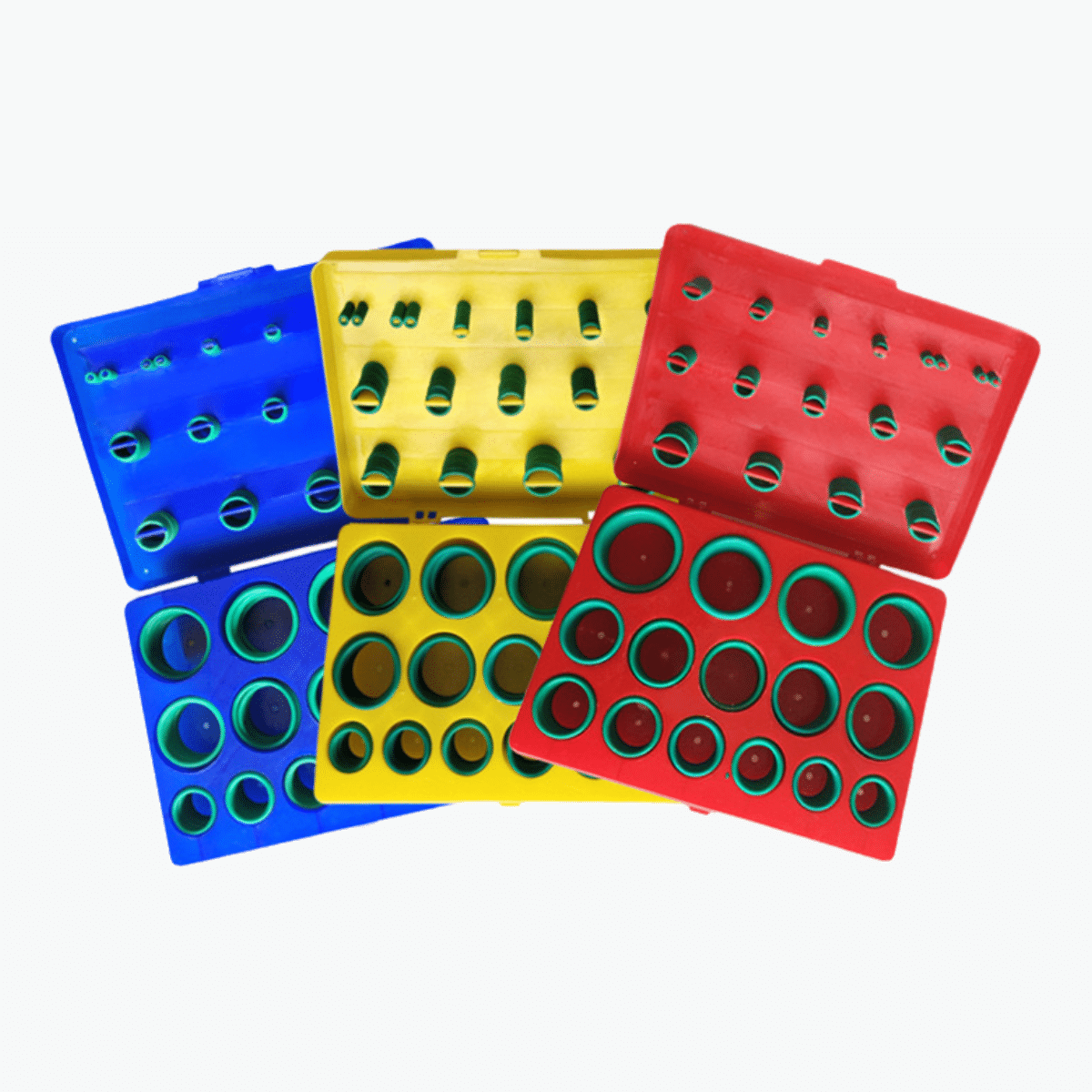If your seals fail under heat, your entire system is at risk. From pumps to engines, high-temperature environments demand more than standard rubber. The question isn’t just which O ring—it’s which trousse offers the right material, size range, and reliability for your application.
In this article, you’ll discover how to choose the ideal high-temp O ring kit, avoid common seal failures, and see how real manufacturers improved performance using Viton and PTFE-based solutions.

Why Do Standard O Rings Fail in High Temperature Conditions?
Standard NBR O-rings typically degrade above 120°C. Heat accelerates material breakdown, causing:
- Hardening or cracking
- Compression set failure
- Chemical degradation
- Swelling or shrinkage
These failures often result in unplanned downtime, oil leaks, or pressure loss. For industrial buyers, this means lost production and higher maintenance costs.
To maintain uptime, you need heat-resistant elastomers that survive constant thermal cycling.
Explore our O Ring Collection for materials designed for harsh environments.
Which Material Should You Choose for a High Temp O Ring?
Each material reacts differently under heat. Here's a practical comparison:
| Matériel | Plage de température | Résistance à la chaleur | Résistance chimique | Flexibilité | Ideal Use Case |
|---|---|---|---|---|---|
| Viton® | -20°C à +200°C | ★★★★☆ | ★★★★☆ | Moyen | Dynamic sealing under heat & pressure |
| PTFE | -200°C à +260°C | ★★★★★ | ★★★★★ | Rigide | Static sealing in ultra-hot & corrosive setups |
| Silicone | -60°C à +200°C | ★★★★☆ | ★★☆☆☆ | Très doux | Low-pressure, food-grade equipment |
| NBR | -40°C à +120°C | ★★☆☆☆ | ★★★☆☆ | Flexible | General-purpose systems |
For a mix of flexibility, durability, and chemical resistance in dynamic systems, Viton is the top industrial choice. If you're sealing static parts at ultra-high temperatures, PTFE performs better.
Learn more on our FKM O Ring page or the O-Ring Seal Main Page.
What’s Inside a High-Temperature O Ring Kit?
Our kits are engineered for fast field maintenance and OEM production support:
| Type de kit | Tailles | Coupes transversales | Options de matériaux | Idéal pour |
|---|---|---|---|---|
| 382 pièces (pouces) | 30 | 1,78–5,33 mm | NBR / Viton | U.S., Japan, engine repairs |
| 428 pièces (métrique) | 30 | 1,50–3,00 mm | NBR / Viton | Europe, ISO-based equipment |
Each kit includes:
- Labeled compartments for size identification
- Cross-section reference chart
- Durable carrying case
- Optional PTFE or silicone customization
Browse available models in our Kits d'assortiment de joints toriques.

Can These Kits Handle Steam, Oil, or Synthetic Fluids?
Yes—if you select the right material.
- Viton performs in wet steam, synthetic lubricants, and hot oil
- PTFE resists aggressive chemicals and static steam exposure
- Avoid NBR in steam or synthetic applications
If you work with boilers, packaging lines, or chemical pumps, consider our High Temperature Sealing Guide.
How Did One Client Cut Seal Failures by 80% Using Viton?
A German food packaging machine maker came to us with frequent seal failures at 180°C.
Challenge: NBR O-rings failed every 3 weeks in high-speed filling machines.
Solution: We provided a custom 382 PCS Viton kit, pre-sized for their pump nozzles and pneumatic valves.
Result: Their maintenance team reported zero failures in 6 months, saving over €3,200 in downtime costs.
Want your own kit? Visit our O Ring Maker Kit page to explore custom builds.
How to Compare Viton and PTFE in Real Use?
| Fonctionnalité | Viton | PTFE |
|---|---|---|
| Température maximale | 200°C | 260°C |
| Flexibilité | Bien | Poor (rigid) |
| Résistance chimique | Excellent | Supérieur |
| Dynamic Use | ✅ | ❌ (static only) |
| Coût | Moyen | Haut |
Utiliser Viton in engines, hydraulics, and packaging lines. Choose PTFE in static chemical seals or ultra-high temp steam valves.
Compare options in our O Ring Solutions Hub.
Where Can These High Temp Kits Be Used?
Common industries using Viton/PTFE kits:
- Automotive engine systems
- Traitement chimique
- HVAC compressors
- Pompes et vannes hydrauliques
- Food and beverage machinery
Explore other relevant uses in our Automotive O-Ring Kit Guide.
Where to Buy Reliable High Temperature O Ring Kits?
Hengoseal supports:
- OEM production lines
- Repair and maintenance teams
- International private label buyers
- B2B importers with no MOQ
We ship worldwide and support OEM customization.
📧 Courriel : [email protected]
📱 WhatsApp: +86 17622979498
You can also view our full O-Ring Product Collection.
Want Custom Kits in Metric or Inch Sizes?
Nous offrons :
- Mixed material kits (Viton + NBR)
- OEM labeling and packaging
- Inch/Metric combos for international use
- Cross-reference with DIN / AS568 / ISO standards
Check our comparison article:
Metric vs Inch O Ring Kit: Which One Fits Your System?
Summary: Is Your Current O Ring Kit Built for Heat?
If your equipment runs hot, a basic rubber O-ring just won’t last. Choose Viton or PTFE-based kits tailored to your region, industry, and sealing demands.
We’ve helped dozens of manufacturers cut downtime, reduce cost, and keep operations running smoothly—especially in high-temp, high-pressure setups.
Ready to Upgrade Your Sealing Performance?
Whether you're an OEM buyer or a repair team lead, we can help you build a tailored high-temp O-ring kit with no MOQ, full documentation, and fast shipping.
→ Browse Our High Temperature O Ring Kits
📩 Email us at [email protected] or message us on WhatsApp to get a quote or sample today.
Related Articles You’ll Find Useful
- FKM vs NBR O-Rings: Which One Performs Better in Heat?
- O Ring Kit: What to Choose for Field Maintenance?
- Nitrile O-Ring Guide: When It Works and When It Fails
- O-Ring Buying Guide: Cost, Material, and OEM Support
- O Ring Guide: All-In-One Resource for Professionals


